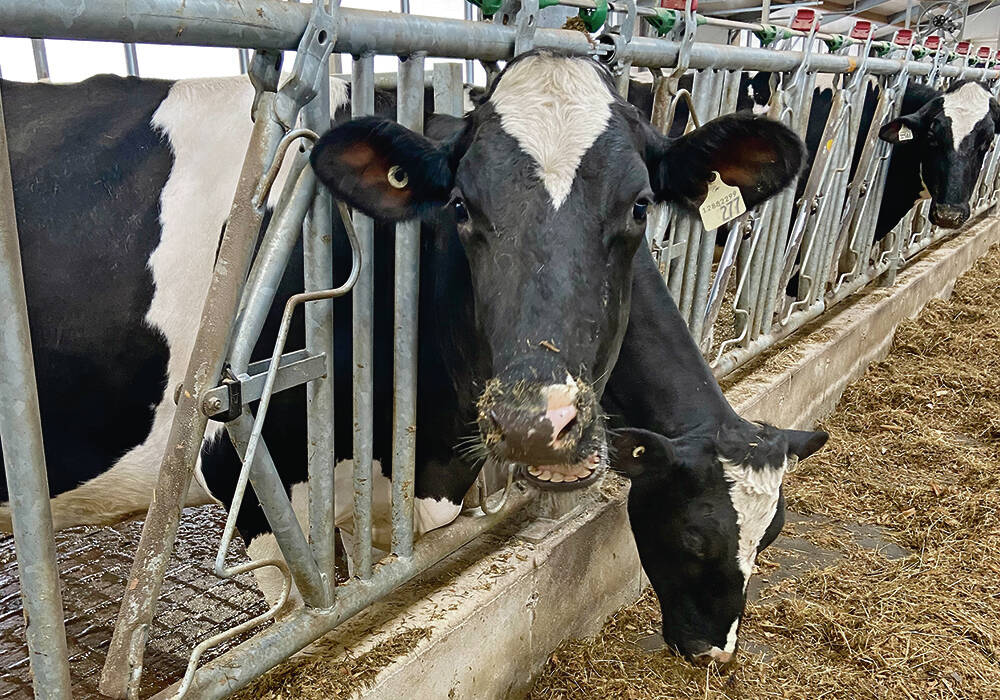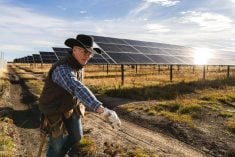Solar energy capture and healthy wetlands are key tools for many conservationists, including some farmers, but do they necessarily live together in harmony?
A new report asks that question and makes one overarching recommendation: more research is needed to measure the impacts of solar developments on wetland health.
The Impact of Solar Development on Wetlands: Literature Review and Jurisdictional Scan represents one of the first times this question has been tackled, said a spokesperson for the organization that commissioned the report.
Read Also

Alberta Milk opens annual hospital fundraiser
Alberta Milk embarks on holiday season campaign to raise money for Alberta Children’s Hospital Foundation
“This is a first step in creating a dialogue across all sectors and levels of governments, partners, and stakeholders responsible for the protection and management of wetland resources and their associated upland habitats,” wrote Greg Hale, with the North American Waterfowl Management Plan, in an email.
This is a new but important field of study, he said.
“Because of how new the technology is and how fast the industry is growing, jurisdictional approaches to mitigating the effects and potential impacts to wetlands by solar energy developments require specific wetland policy measures to be developed and implemented to address the risks to wetlands,” said Hale.
“This report helps our partners understand what’s currently being addressed and what’s needed, including additional research and where collaboration across jurisdictions is required for development of effective policies that provide the necessary protection and mitigation measures to protect these valuable ecosystems.”
The waterfowl management plan is a nearly 30-year-old partnership between Canada, the U.S. and Mexico that is dedicated to sustaining continental waterfowl populations.
The Alberta part of the plan comprises five partners that all have responsibility for Alberta’s wetlands as part of their mandates, wrote Hale. They include Alberta Environment and Protected Areas, Alberta Agriculture and Irrigation, Environment and Climate Change Canada, Ducks Unlimited Canada and the Nature Conservancy of Canada.
The report was developed at the request of these partners, wrote Hale.
“Currently, our partners saw the value of reviewing the current state of knowledge regarding the impact of solar energy development on wetlands — essential ecosystems that provide important environmental and economic benefits — and how jurisdictions across North America are responding.
“With a better understanding of the risks and impacts from development, better decisions can be made for protecting and maintaining wetlands for everyone’s benefit across Alberta, including the development of effective policy measures.”
The document was prepared by the Miistakis Institute, a non-profit organization specializing in complex environmental issues.
According to the report, the impacts of solar energy on wetlands are not well understood.
“Renewable energy is growing in Alberta at a pace that will exceed the Renewable
Electricity Act’s goal of generating 30 per cent of electricity from renewable sources by 2030,” the report reads.
“While the benefits of moving to renewable energy sources are clear, environmental risks of development remain… A greater understanding can provide guidance to solar energy development requirements or processes that would better protect wetland value and function.”
The fundamental takeaway from the report is that the current body of knowledge is limited regarding the effects of solar development on wetlands, and further research is necessary. However, it runs deeper than that.
Wrote Hale: “As outlined in the report ‘first, the impact of solar development on wetlands is highly context-dependent: there is significant variation in the type of solar technology used, solar facility design, required associated infrastructure (e.g., transmission lines, access roads) and wetland ecosystem characteristics.
“‘Second, most studies have been short-term, leading to a lack of long-term empirical data on the impact of solar development on wetlands.
“‘Finally, there has been little cumulative impact research of multiple solar facilities in wetland ecosystems, which are often designed in clusters in a given region. These limitations highlight the need for further research to better understand the specific impact of solar development on wetlands and develop effective strategies to mitigate negative effects.’”
The report does not weigh the environmental risks versus rewards of solar energy development in general. It focuses on the impacts of photovoltaics and concentrated solar power on wetlands.
“Photovoltaics, which convert solar radiation into electricity, is the most common technology in North America and is the most commonly studied,” reads the document.
“Concentrated solar power, which uses mirrors to reflect and focus sunlight to generate heat and convert into electricity, is also considered due to inclusion in reviewed resource, and poses similar risks to wetlands.”
The full report is available at abnawmp.ca or the Miistakis Institute site at rockies.ca.
















